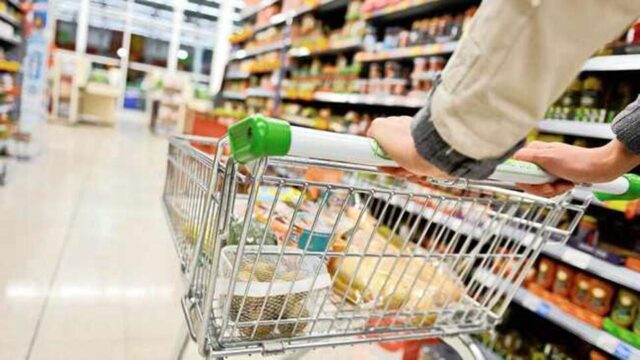OPINION: These key economic parameters affect low-income households and the poor the worst, writes Joseph Kau.
By Joseph Kau
THE TRIPLE-burden of a depreciating rand, rocketing inflation and interest rates has implications for the agricultural sector and food security
Since November 2022, the South African Reserve Bank (SARB) has consistently been hiking its repo rate basis point to the current level of 7.75%, this being its ninth consecutive rate hike since November 2021.
The rationale for these moves is primarily to try to contain inflation, which since the Covid-19 pandemic and the war between Ukraine and Russia has been on an upward trajectory.
Since May 2022, the headline inflation exceeded the target band of 3 and 6 percent. In July 2022, the Consumer Price Index (CPI) had reached a level of 7.8%, this being a level last seen in 2013.
Although SARB has predicted inflation to return to lower levels of 5.5% during 2023, the recent experiences are cause for concern for the economy.
At the heart of the problem are issues relating to food prices, transportation costs and energy inflation. These key economic parameters affect low-income households and the poor the most.
The Department of Mineral Resources and Energy’s data shows that prices for key energy resources in Gauteng have been on an upward trajectory with reports that taxi fares, used primarily by the country’s low-income households and poor, escalated more than 16.4% year-on-year in June 2022.
According to a Statistics SA (StatsSA) report, as of February 2022, food inflation at 6.7% has exceeded headline inflation which stood at 5.7%, at the time.
According to the National Agriculture Marketing Council (NAMC), the cost of a food basket expressed as a share of the average monthly income of the poorest 30% of the South African population increased from 65.3% in January 2021 to 68 percent in January 2022. This is in contrast with a share of the average monthly income of the wealthiest 20%, which increased from 3.5 percent in January 2021 to 3.6 percent in January 2022.
A number of studies have empirically uncovered the causes of inflation, but the important ones are of a structural nature. For instance, a 2013 study by Michael Adusei, “Financial Development and Economic Growth: Additional Evidence from Ghana”, posits that the exchange rate and purchasing power parity and the openness of the South African economy are the main determinants of inflation. The author postulates that, largely, the South African inflation is imported from the US.
A study by Madito and Odhiambo in 2018 also posits that the depreciating currency and prices of imported goods influence local inflation. Balciar, Uwilingiye and Gupta in 2018 also indirectly agree with the aforesaid researchers by making referral to the price of crude oil as an important cause to local inflation in South Africa.
In the context of the inflation-targeting policy regime of the SARB, whenever there is inflation in the country, or whenever the rand depreciates, the Reserve Bank, responds by hiking the repo rate, with a view of curtailing money supply in the economy and thereby protecting the rand.
Movements in the repo rate directly affect movements in local banks’ interest rates with the effect that credit becomes unaffordable to the poor. Furthermore, a large number of local firms depend on credit to fund their daily operations and to expand production and employ more people.
In an environment where interest rates are high, and everything remains constant, firms shedding jobs can be expected. Whenever people are unemployed, the government carries a huge fiscal liability in the form of social grants and ends up borrowing money in international markets. This in turn leads to a high budget and current account deficit.
Further data from SARB and StatsSA in January 2010, May 2014, February 2016 and January 2017 show the consumer price inflation exceeded the SARB’s target band of 3 to 6 percent. From 2014, the rand has continued to depreciate against the US dollar.
For almost a decade, from, December 2012 to January 2020, the prime lending rate followed in the same direction as the movement of the rand, and this is because it is used as an instrument to curtail money supply. Just like Madito and Odhiambo in their 2018 paper, “The Main Determinants of Inflation in South Africa: An Empirical Investigation,” cautioned, this will always bring to the political discourse the question around the relevance of “inflation-targeting” policy of the SARB.
Weaker currency normally leads to an increase in agricultural exports
According to Agbiz (2022), in the third quarter of 2022, the agricultural sector employed 873 new people amid weaker exchange rates. During this period, the rand traded between R17 and R18 to the dollar. There was also a surprise growth domestic product (GDP) growth of 1.6%. Due to the capitalist nature of the economy, the new jobs are thereby not even sustainable.
In the agricultural sector, labour can be replaced by mechanisation. As noted in the last three years, while at the national level there is growth in agricultural production and food security, however, poor households continue to suffer from high level of food insecurity.
As a recommendation, it remains difficult not to question the existing macro-economic policy in South Africa. At the micro-economic level, poor households need to be supported to start backyard gardens, as this may serve as a buffer against rocketing food inflation.
* Joseph Kau is an agricultural economist with the Agricultural Research Council.
– BUSINESS REPORT








